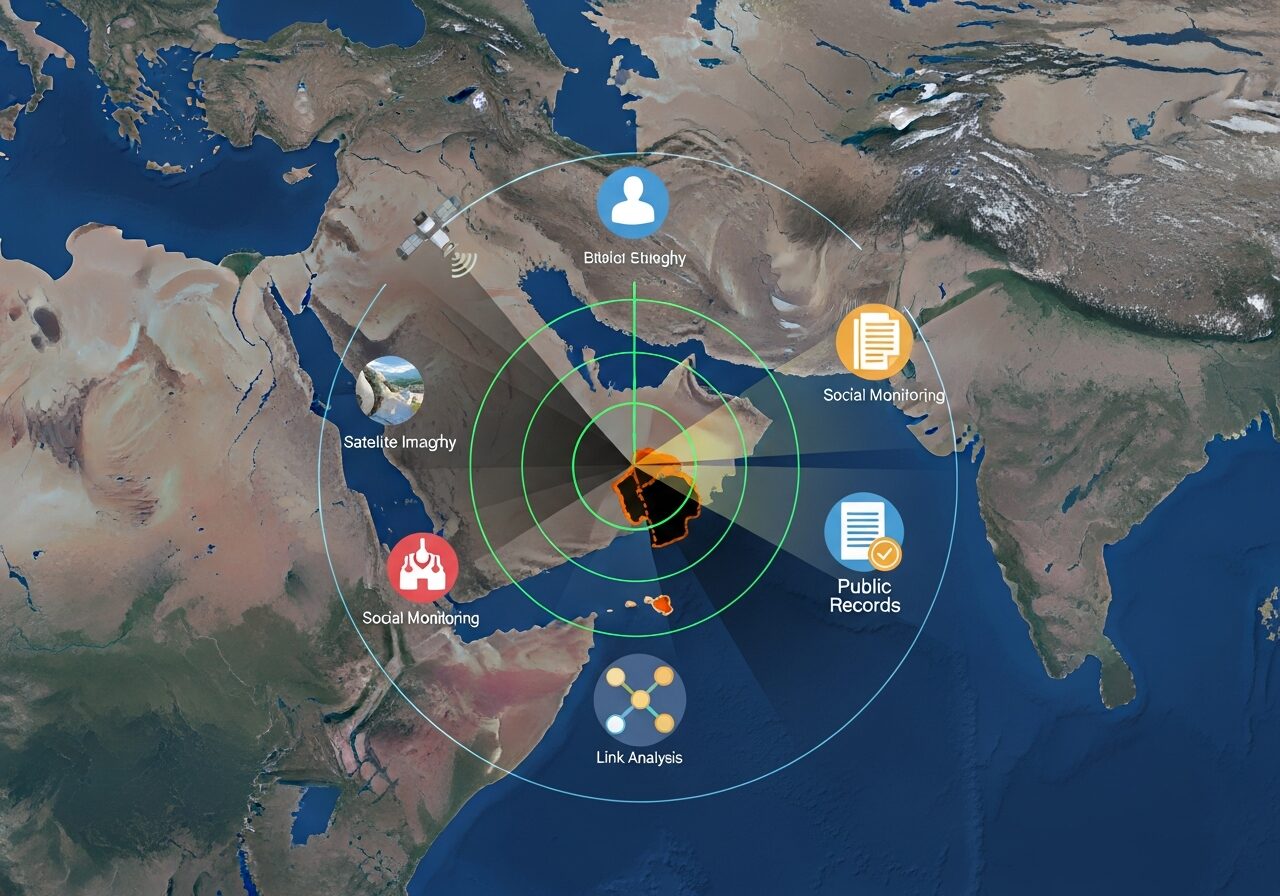Let me hit you with some uncomfortable truth from the trenches: In October 2025, we’re watching adversaries leverage AI to develop attack techniques that evolve faster than our signature databases can update. I’ve spent over 20 years in offensive security, and I can tell you—this is different. We’re no longer just dealing with smarter phishing emails. We’re facing AI systems that learn your network’s behavior patterns, adapt in real-time, and camouflage themselves within legitimate traffic.
Here’s the kicker: 96% of SOCs admit to critical detection gaps, with the most dangerous blind spots in cloud environments (74%) and digital identity systems (67%). Meanwhile, the average SOC analyst is overwhelmed by 1,000 to 100,000+ alerts daily, with 64% of detection and response work still being done manually.
Sound familiar? Yeah, I thought so.
The good news? OSINT-driven behavioral detection is your secret weapon against these AI-enhanced threats. Let me show you how to fight fire with fire—or in this case, how to fight AI with intelligence-augmented behavioral analysis.
Understanding AI-Enhanced Attacks: What Makes Them Different
The Evolution of Adversarial AI
Traditional attacks follow predictable patterns. An attacker scans your network, identifies vulnerabilities, exploits them, and establishes persistence. Security tools catch these because they’re looking for known indicators of compromise (IOCs).
AI-enhanced attacks? They’re playing a completely different game:
- Adaptive Evasion: AI systems analyze your security posture in real-time and modify attack vectors to avoid detection
- Behavioral Mimicry: Machine learning models study legitimate user behavior and replicate it perfectly during lateral movement
- Automated Reconnaissance: AI conducts passive intelligence gathering across multiple data sources simultaneously
- Dynamic Payload Generation: Malware that rewrites itself to bypass signature-based detection
I recently analyzed an incident where an AI-powered attack tool spent three weeks learning normal admin behavior patterns before executing a single malicious command. By the time it moved, it looked exactly like the legitimate system administrator. Traditional SIEM rules? Useless.

Why Traditional Detection Fails Against AI Threats
Your legacy SIEM is choking on modern data loads. Here’s why:
- Signature-Based Detection is Dead: AI-generated malware creates unique variants for every target
- Rule-Based Alerts Miss Context: Static rules can’t understand behavioral anomalies in dynamic environments
- Alert Fatigue Blinds Analysts: When everything triggers an alert, nothing gets proper investigation
- Visibility Gaps Create Blind Spots: Multi-cloud and hybrid environments generate massive detection gaps
The solution isn’t more alerts—it’s smarter detection through behavioral analysis powered by OSINT enrichment.
OSINT-Driven Behavioral Detection: Your Defensive Framework
What is OSINT-Driven Behavioral Detection?
OSINT-driven behavioral detection combines open-source intelligence gathering with behavioral analytics to identify threats based on what they do rather than what they look like. Instead of searching for known malware signatures, you’re analyzing behavioral patterns and enriching them with external intelligence.
Think of it this way: A traditional SOC looks for a specific gun. An OSINT-driven behavioral detection system looks for anyone acting like they’re about to use a weapon—regardless of what that weapon looks like.
The Three Pillars of Effective Behavioral Detection
1. Baseline Normal Behavior
You can’t detect anomalies if you don’t know what “normal” looks like. This means:
- Mapping typical user access patterns across your environment
- Understanding normal data flow between systems
- Documenting standard administrative activities
- Identifying regular communication patterns
2. Enrich with OSINT Context
This is where the magic happens. Every suspicious behavior gets enriched with external intelligence:
- Threat Actor TTPs: Cross-reference behaviors against known adversary techniques
- Geolocation Intelligence: Analyze access patterns against threat geography
- Domain and IP Reputation: Validate external connections against threat feeds
- Dark Web Intelligence: Monitor for leaked credentials or planned attacks
- Social Media Intelligence: Track threat actor discussions and tool releases
Tools like Kindi excel at automating this OSINT enrichment process, pulling intelligence from multiple sources and correlating it with your security events in real-time.
3. Behavioral Anomaly Scoring
Not all anomalies are threats. Your system needs to:
- Score deviations based on risk context
- Prioritize based on potential impact
- Reduce false positives through intelligent filtering
- Provide actionable intelligence to analysts

Implementing OSINT-Enhanced Behavioral Detection in Your SOC
Step 1: Establish Your Behavioral Baseline
Start with these critical areas:
User Behavior Analytics (UBA)
- Login times and locations
- Application access patterns
- Data access and transfer volumes
- Privilege escalation events
Network Behavior Analytics (NBA)
- Traffic flow patterns
- Protocol usage
- Connection duration and frequency
- Data exfiltration indicators
Entity Behavior Analytics (EBA)
- Service account activities
- API usage patterns
- Cloud resource provisioning
- Configuration changes
Step 2: Integrate OSINT Intelligence Feeds
Your behavioral detection is only as good as your intelligence. Integrate these OSINT sources:
- Threat Intelligence Platforms: Commercial and open-source feeds
- Vulnerability Databases: CVE, NVD, and vendor advisories
- Adversary Infrastructure: Known C2 servers, malicious domains, suspicious IPs
- Dark Web Monitoring: Credential leaks, exploit sales, attack planning
- Social Media Intelligence: Threat actor communications, tool releases
For comprehensive coverage, check out our guide on OSINT workflow automation to streamline your intelligence gathering.
Step 3: Build Detection Use Cases
Here are five critical use cases for detecting AI-enhanced attacks:
Use Case 1: Adaptive Lateral Movement Detection
- Behavior: Account accessing resources outside normal pattern
- OSINT Enrichment: Check if accessed systems match known APT targeting
- Trigger: Behavioral deviation + threat intelligence correlation
Use Case 2: AI-Powered Phishing Campaign Detection
- Behavior: Unusual email patterns with high engagement rates
- OSINT Enrichment: Domain reputation, sender infrastructure analysis
- Trigger: Anomalous communication + suspicious infrastructure
Use Case 3: Cloud Misconfiguration Exploitation
- Behavior: Rapid cloud resource enumeration
- OSINT Enrichment: Source IP reputation, known attack tool signatures
- Trigger: Abnormal cloud API usage + malicious source indicators
Use Case 4: Identity-Based Attack Detection
- Behavior: Credential usage from unusual locations or devices
- OSINT Enrichment: Geolocation intelligence, leaked credential databases
- Trigger: Impossible travel + credential compromise indicators
Use Case 5: Supply Chain Attack Indicators
- Behavior: Unexpected software updates or dependency changes
- OSINT Enrichment: Package repository monitoring, vendor compromise intelligence
- Trigger: Unauthorized changes + supply chain threat intelligence
For deeper insights on supply chain threats, read our analysis on supply chain cyber attacks.

Step 4: Automate Response Playbooks
Detection without response is just expensive monitoring. Build automated playbooks:
- Immediate Containment: Isolate affected systems automatically
- Evidence Collection: Capture forensic data before it’s lost
- Threat Hunting: Trigger proactive searches for similar behaviors
- Intelligence Sharing: Feed findings back into your detection models
Learn more about automated OSINT investigations to scale your response capabilities.
Measuring Success: KPIs for OSINT-Driven Detection
Track these metrics to validate your program:
- Mean Time to Detect (MTTD): How quickly you identify threats
- Mean Time to Respond (MTTR): How fast you contain and remediate
- False Positive Rate: Percentage of alerts that aren’t real threats
- Detection Coverage: Percentage of MITRE ATT&CK techniques you can detect
- Analyst Efficiency: Alerts investigated per analyst per day
Real-World Success: Case Study
I recently worked with a financial services SOC that implemented OSINT-driven behavioral detection. Within 30 days:
- MTTD dropped from 4 hours to 12 minutes
- False positives reduced by 73%
- Detected 3 active AI-enhanced attacks that bypassed their traditional SIEM
- Analyst burnout decreased significantly due to higher-quality alerts
The key? They stopped chasing signatures and started hunting behaviors enriched with real-time intelligence.
The Bottom Line: Adapt or Get Breached
AI-enhanced attacks aren’t coming—they’re here. Your adversaries are using machine learning to bypass your defenses, and traditional signature-based detection is about as useful as a screen door on a submarine.
OSINT-driven behavioral detection gives you the context and intelligence to identify threats based on what they do, not what they look like. It’s the difference between playing checkers and playing chess.
Start small. Pick one use case. Integrate one OSINT feed. Build one automated playbook. Then scale from there.
The attackers are already using AI. It’s time you fought back with intelligence-augmented detection.
Want to see how Kindi can automate your OSINT enrichment and behavioral detection? Let’s talk about turning your SOC from reactive to proactive.



